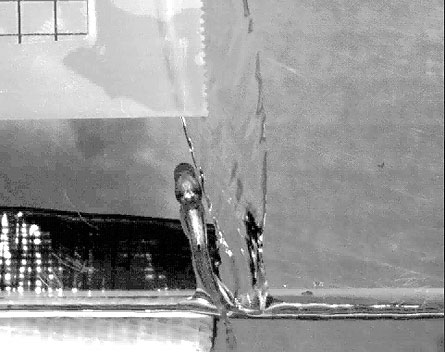BOSTON — Evolution has stuck Hawaiian fish called stream gobies between a rock and a scary place.

A Sicyopterus stimpsoni goby shorter than a thumb has to climb the rocks of waterfalls, sometimes several hundred feet high, on a juvenile migration upstream. But to reach those falls, the fish has to pass through a kill zone of lowland waterways full of predatory fish, explains Richard Blob of Clemson University in South Carolina.
Darting away from predators favors a taller body shape with bigger fins instead of the squat, rock-hugging form ideal for waterfalls, according to new work from Blob and his colleagues. Trade-offs between squat and tall in different island geographies could explain some of the variety in shape within this species, Blob said January 4 at the annual meeting of the Society for Integrative and Comparative Biology.
“What’s novel is the comparative study” of gobies on different islands, says Thomas Kunz of Boston University
The theme of conflicting evolutionary pressures on the same structure runs deep in nature. Kunz studies bats, but he says he’s starting to think about how the many uses of wings affect their structure.
To test for predator effect on body shape, Blob and coworkers put S. stimpsoni gobies from Hawaii’s Big Island in tanks containing a major goby-eater: a fish called the sleeper, or Eleotris sandwicensis. When sleepers had caught half the gobies, a job that took about three days, the researchers measured the body dimensions of the survivors.
Gobies that evaded predators tended to have a greater relative body depth than usual, Blob reported. This shape makes it easier to generate thrust while swimming.
The higher profile, alas, also means more drag in the struggle up a waterfall, Blob says, based on earlier research with Heiko Schoenfuss of St. Cloud State University in Minnesota, who also worked on the current study. With torrents pounding down, waterfall climbers inch up rock faces by gripping the surfaces with their mouths and a specialized pinhead-sized sucker on their undersides. “In human terms, it’s like a marathon,” Blob says.
S. stimpsoni gobies get caught in the opposing forces for body shapes since the fish live an out-to-sea-and-back lifestyle a little like mainland salmon. These gobies hatch in Hawaii’s upland waterways, wash out to sea and, six months later, swim back to breed. Gobies don’t necessarily return to their original rivers, but they do fight their way to streams above waterfalls, where their native predators don’t go.
On the BigIsland, those waterfalls lie closer to the sea than on the geologically older, more eroded island of Kauai, Blob says. Therefore, the S. stimpsoni gobies on the BigIsland don’t have as far to swim in waters full of predators, and these gobies tend to have more of the squat climber shape than does the same species on Kauai.






